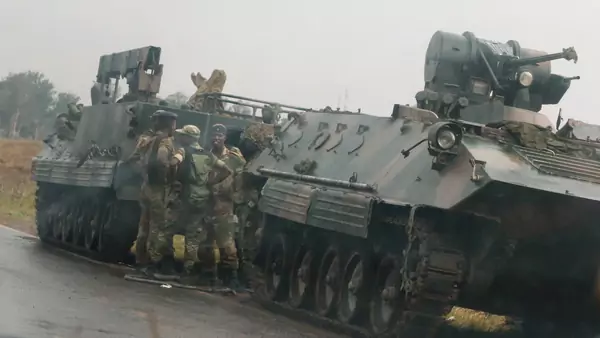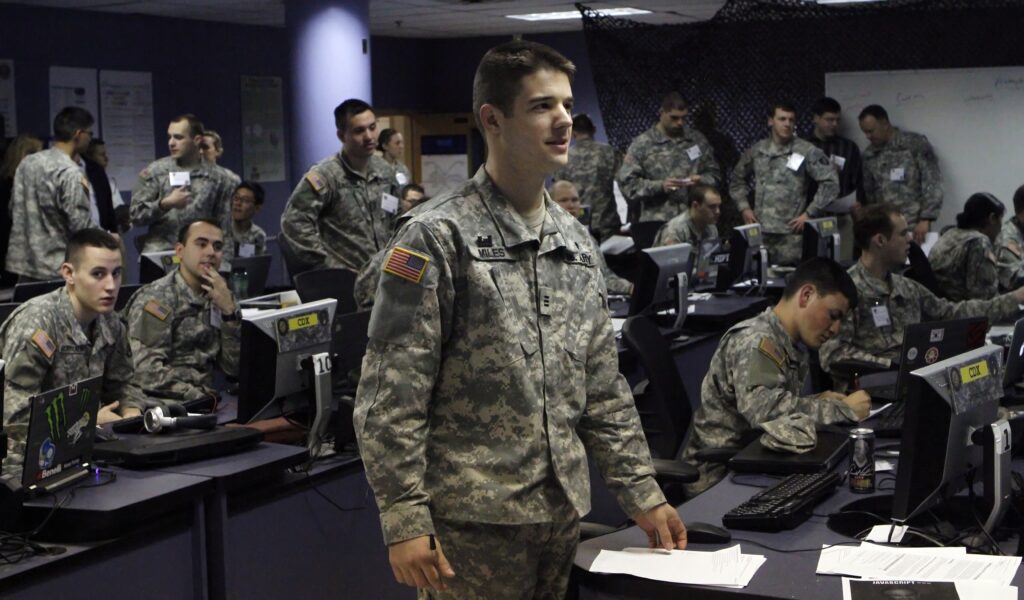MANEUVER WARFARE, 4GW, HIZBOLLAH AND WILLIAM LIND
- Maj Gen PK Mallick, VSM (Retd)
In the early 90s when I was undergoing Defence Services Staff College Course Maneuver Warfare was one of the most discussed topics. A hand out was also made and given to every officer undergoing the course. It was a well written document. However, I have not seen any doctrinal publication on Maneuver warfare either from Military Training Directorate in earlier days or from ARTRAC. It was or is, I suppose, discussed in DSSC Wellington and that’s about it. Probably it will have some mention in courses conducted by Armd Corps School or Mech Infantry School at Nagar. In our infantry dominated mindset Maneuver is somehow linked to Mech Forces!
 The bible for the Maneuver Warfare was Maneuver Warfare Handbook by William S Lind published in 1985.
The bible for the Maneuver Warfare was Maneuver Warfare Handbook by William S Lind published in 1985. 
The purpose of Maneuver Warfare is to defeat the enemy by disrupting the opponent's ability to react, rather than by physical destruction of forces. This book develops and explains the theory of maneuver warfare and offers specific tactical, operational, and organizational recommendations for improving ground combat forces. The authors translate concepts into concrete doctrine. Although the book uses the Marine Corps as a model, the concepts, tactics, and doctrine discussed apply to any ground combat force.
In 1989 William Lind propagated the theory of Fourth Generation Warfare (4GW). He said, In Fourth Generation war, the state loses its monopoly on war. All over the world, state militaries find themselves fighting non-state opponents such as al-Qaeda, Hamas, Hezbollah, and the FARC. Almost everywhere, the state is losing.
Fourth Generation war is also marked by a return to a world of cultures, not merely states, in conflict. We now find ourselves facing the Christian West's oldest and most steadfast opponent, Islam 

In 2004 Lind wrote :
If America had some Third Generation ground forces, capable of maneuver warfare, we might be able to fight battles of encirclement. The inability to fight battles of encirclement is what led to the failure of Operation Anaconda in Afghanistan, where al Qaeda stood, fought us, and got away with few casualties. To fight such battles we need some true light infantry, infantry that can move farther and faster on its feet than the enemy, has a full tactical repertoire (not just bumping into the enemy and calling for fire) and can fight with its own weapons instead of depending on supporting arms. We estimate that U.S. Marine infantry today has a sustained march rate of only 10-15 kilometers per day; German World War II line, not light, infantry could sustain 40 kilometers.
Fourth Generation opponents will not sign up to the Geneva Conventions, but might some day be open to a chivalric code governing how our war with them would be fought? It's worth exploring.
How U.S. forces conduct themselves after the battle may be as important in 4GW as how they fight the battle.
What the Marine Corps calls "cultural intelligence" is of vital importance in 4GW, and it must go down to the lowest rank. In Iraq, the Marines seemed to grasp this much better than the U.S. Army.
What kind of people do we need in Special Operations Forces? Minds were more important than muscles, but it is not clear all U.S. SOF understand this.
One key to success is integrating our troops as much as possible with the local people.
Unfortunately, the American doctrine of "force protection" works against integration and generally hurts us badly.
"There are two ways to deal with the issue of force protection. One way is the way we are currently doing it, which is to separate ourselves from the population and to intimidate them with our firepower. A more viable alternative might be to take the opposite approach and integrate with the community. That way you find out more of what is going on and the population protects you. The British approach of getting the helmets off as soon as possible may actually be saving lives."
What "wins" at the tactical and physical levels may lose at the operational, strategic, mental and moral levels, where 4GW is decided. Martin van Creveld argues that one reason the British have not lost in Northern Ireland is that the British Army has taken more casualties than it has inflicted. This is something the Second Generation American military has great trouble grasping, because it defines success in terms of comparative attrition rates.
We must recognize that in 4GW situations, we are the weaker, not the stronger party, despite all our firepower and technology.
What can the U.S. military learn from cops? Our reserve and National Guard units include lots of cops; are we taking advantage of what they know?
One key to success in 4GW may be "losing to win." Part of the reason the wars in Afghanistan and Iraq are not succeeding is that our initial invasion destroyed the state, creating a happy hunting ground for Fourth Generation forces. In a world where the state is in decline, if you destroy a state, it is very difficult to recreate it
While war against another state may be necessary one should seek to preserve that state even as one defeats it. Grant the opposing armies the 'honors of war,' tell them what a fine job they did, make their defeat 'civilized' so they can survive the war institutionally intact and then work for your side. Humiliating the defeated enemy troops, especially in front of their own population, is always a serious mistake but one that Americans are prone to make.
A faculty member at the National Defense University wrote to Marine Corps General Mattis, commander of I MAR DIV, to ask his views on the importance of reading military history. Mattis responded with an eloquent defense of taking time to read history, one that should go up on the wall at all of our military schools. "Thanks to my reading, I have never been caught flat-footed by any situation," Mattis said. "It doesn’t give me all the answers, but it lights what is often a dark path ahead."
Still, even such a capable and well-read commander as General Mattis seems to miss the point about Fourth Generation warfare. He said in his missive, "Ultimately, a real understanding of history means that we face NOTHING new under the sun. For all the ‘4th Generation of War’ intellectuals running around today saying that the nature of war has fundamentally changed, the tactics are wholly new, etc., I must respectfully say…’Not really…"
We are not saying that Fourth Generation tactics are new. On the contrary, many of the tactics Fourth Generation opponents use are standard guerilla tactics. Others, including much of what we call "terrorism," are classic Arab light cavalry warfare carried out with modern technology at the operational and strategic, not just tactical, levels.
What will characterize it is not vast changes in how the enemy fights, but rather in who fights and what they fight for. The change in who fights makes it difficult for us to tell friend from foe. A good example is the advent of female suicide bombers; do U.S. troops now start frisking every Moslem woman they encounter? The change in what our enemies fight for makes impossible the political compromises that are necessary to ending any war. We find that when it comes to making peace, we have no one to talk to and nothing to talk about. And the end of a war like that in Iraq becomes inevitable: the local state we attacked vanishes, leaving behind either a stateless region (Somalia) or a façade of a state (Afghanistan) within which more non-state elements rise and fight.
General Mattis is correct that none of this is new. It is only new to state armed forces that were designed to fight other state armed forces. The fact that no state military has recently succeeded in defeating a non-state enemy reminds us that Clio has a sense of humor: history also teaches us that not all problems have solutions.
In November 2014 Lind wrote :
Since the publication of the original article in the Marine Corps Gazette, three things have happened.
First, events have justified the article’s description of the Fourth Generation as war that escapes the state framework. The high-tech alternative, which became known subsequently by a number of buzzwords — the Revolution in Military Affairs, Transformation, Net-Centric Warfare, etc. — is not where war has gone. Most of the high-tech systems we continue to buy have proven irrelevant to fighting non-state forces.
Second, the theory of 4GW has been expanded and refined, a process that will continue. The most important addition to the theory has been Martin van Creveld’s book, The Transformation of War. Tom Hammes’s book, The Sling and the Stone, has brought confusion to much of the discussion of 4GW because it gets the Fourth Generation wrong. Insurgency is not a dialectically qualitative change in war. It is merely one way in which war has been fought for a long time. As van Creveld puts it, 4GW is not a change in how war is fought (though it brings such changes) but in who fights and what they fight for. That is a dialectically qualitative change, the biggest since the Peace of Westphalia in 1648.
The third thing that has happened is actually a negative, i.e., something that did not happen. Despite overwhelming evidence that 4GW is the wave of the future (including four defeats of the U.S. armed forces by 4GW opponents: Lebanon, Somalia, Iraq and Afghanistan), the U.S. military has not moved to prepare for it. It remains, and apparently will remain until covered by the lid of history’s trashcan, a Second Generation military. That is to say, it reduces war to putting firepower on targets. [https://fabiusmaximus.com/2014/11/21/william-lind-4gw-war-military-strategy-73112/ ]
Lind has started a new column on military affairs, "The View From Olympus," at TraditionalRight.com. He is ultra rightist. Recently he had some interesting observation on Hizbollah. He writes and I quote ;
When we think of ISIS’s enemies, we usually list religions other than Islam, Islamics who reject Sunni puritanism, local states, Western states and so on. But from the perspective of Fourth Generation war theory, ISIS’s most important competition may be with Hezbollah. These two Islamic Fourth Generation entities represent two different models of 4GW. Hezbollah’s model hollows out the state where it is based but leaves it standing. The ISIS model does away with the state and creates a replacement in the form of a caliphate, which is a pre-state type of government.
The competition between these two approaches to Fourth Generation war is ending, and the verdict is clear: the Hezbollah model wins. This does not come as a great surprise, except possibly to ISIS. By seizing territory and proclaiming a caliphate, ISIS opened itself up to defeat by state militaries. Those state militaries could fight the way they are trained and equipped to, in a war of firepower and attrition where the goal is to seize and hold ground. Whenever 4GW forces take on state armed forces in that kind of fight, they are likely to lose. They are pitting their physical weakness against their opponents’ greatest strength, which lies in the tactical/physical box on the grid. (For the grid, see the Fourth Generation Warfare Handbook.)

In contrast, the Hezbollah model uses a hollowed-out state to shift the conflict away from the tactical/physical box to 4GW entities’ greatest strength, the box marked strategic/moral (Col. John Boyd argued this is the most powerful box, while the tactical/physical box is the weakest in determining the ultimate outcome.) The Lebanese state protects Hezbollah strategically and morally because it is impossible to attack Hezbollah’s base without also attacking the nominally sovereign state of Lebanon. Because the international ruling elite regards attacks on other states, especially weak states that themselves pose no threat, as morally wrong, the attacker quickly finds himself condemned and isolated. This, more than Hezbollah’s tactical strength, is why Our Greatest Ally’s attempts to attack Hezbollah on Lebanese soil have resulted in defeat, although Hezbollah is much better tactically than most other 4GW entities.
ISIS may now attempt to revert to the Hezbollah model, but I think it is unlikely to succeed. That model requires years of patient development and serving rather than oppressing the local population, and I doubt ISIS is capable of either. The fall of its illegitimate caliphate will erode its ability to recruit and to secure funding, and like Al Qaeda it will become a wraith of its former self.
But just at this point of success the West’s inability to understand Fourth Generation war will set it up again for failure. Western governments fall into the trap of defining their enemies as this or that particular 4GW bogeyman: al Qaeda or ISIS or Hamas or whatever. In doing so, they miss the forest for the trees. 4GW entities, Islamic or otherwise, come and go. Each particular entity matters relatively little. What matters is that they can generate themselves endlessly so long as we miss the real threat, in the form of the ground from which they all spring. That ground is the crisis of legitimacy of the state. As Martin van Creveld said to me many years ago, everyone can see it except the people in the capital cities.
The origin of the crisis of legitimacy, in turn, is the emptying the state of its content, something the Globalist elite demands. This “internationalist” view has been dominant among the global elite since the end of World War I, and you cannot now dissent from it and remain a member of the elite. That is why the elite so fears and loathes President Trump, who represents the return of state sovereignty – and with it a resurgent legitimacy of the state. Such a resurgence is the only thing that can defeat not this or that 4GW entity, but 4GW itself at the decisive strategic/moral level.
Does this make 4GW and the Globalist elite de facto allies? Draw your own conclusion.
Whether you like or don’t like, agree or disagree, you cannot wish away what William Lind is saying.
May I have your opinion please.













/arc-anglerfish-arc2-prod-mco.s3.amazonaws.com/public/OOOYQZKVG5H2ND4AWEFLHPVBZU.jpg)
/arc-anglerfish-arc2-prod-mco.s3.amazonaws.com/public/PZHYCRDZ4ZDELDSIGZ325TNQBY.jpg)
